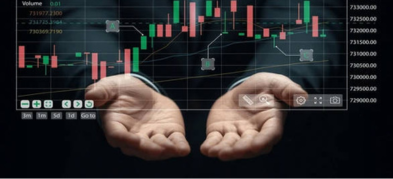
Ultima Markets App
Trade Anytime, Anywhere
Important Information
This website is managed by Ultima Markets’ international entities, and it’s important to emphasise that they are not subject to regulation by the FCA in the UK. Therefore, you must understand that you will not have the FCA’s protection when investing through this website – for example:
- You will not be guaranteed Negative Balance Protection
- You will not be protected by FCA’s leverage restrictions
- You will not have the right to settle disputes via the Financial Ombudsman Service (FOS)
- You will not be protected by Financial Services Compensation Scheme (FSCS)
- Any monies deposited will not be afforded the protection required under the FCA Client Assets Sourcebook. The level of protection for your funds will be determined by the regulations of the relevant local regulator.
Note: Ultima Markets is currently developing a dedicated website for UK clients and expects to onboard UK clients under FCA regulations in 2026.
If you would like to proceed and visit this website, you acknowledge and confirm the following:
- 1.The website is owned by Ultima Markets’ international entities and not by Ultima Markets UK Ltd, which is regulated by the FCA.
- 2.Ultima Markets Limited, or any of the Ultima Markets international entities, are neither based in the UK nor licensed by the FCA.
- 3.You are accessing the website at your own initiative and have not been solicited by Ultima Markets Limited in any way.
- 4.Investing through this website does not grant you the protections provided by the FCA.
- 5.Should you choose to invest through this website or with any of the international Ultima Markets entities, you will be subject to the rules and regulations of the relevant international regulatory authorities, not the FCA.
Ultima Markets wants to make it clear that we are duly licensed and authorised to offer the services and financial derivative products listed on our website. Individuals accessing this website and registering a trading account do so entirely of their own volition and without prior solicitation.
By confirming your decision to proceed with entering the website, you hereby affirm that this decision was solely initiated by you, and no solicitation has been made by any Ultima Markets entity.
I confirm my intention to proceed and enter this website Please direct me to the website operated by Ultima Markets , regulated by the FCA in the United KingdomWhat Is an Appreciating Asset?
An appreciating asset is something that increases in value over time, such as stocks, real estate, or gold. These assets grow due to rising demand, limited supply, or economic factors, helping investors build wealth and beat inflation.
Investors and traders often seek appreciating assets to:
- Beat inflation
- Preserve capital
- Compound long-term gains
- Diversify portfolios
The appreciation may be driven by factors like supply-demand imbalance, monetary policy, currency debasement, or investor behavior.

Which Is an Example of an Appreciating Asset?
Here’s a trader-analyzed Top 10 List of appreciating assets, backed by market data and long-term performance trends.
Real Estate
Land is scarce, and growing populations increase housing demand. Urban properties especially appreciate due to economic development. U.S. residential real estate has appreciated ~4.2% per year over the long term (adjusted for inflation).
Real estate is often used as a long-term hedge against inflation and allows leveraged investment via mortgages.
Stocks (Equities)
As companies grow earnings and expand market share, stock prices increase. Broad indices like the S&P 500 historically rise with economic growth. S&P 500 has delivered ~9.9% annual returns, including dividends, over the past 90+ years.
Traders focus on growth and momentum stocks; investors often hold blue-chip or index ETFs.
Gold
Gold is a store of value and widely used as an inflation hedge, especially during currency debasement or geopolitical risks. Long-term real return is around ~5% annually, though higher in short-term bullish cycles.
Gold is influenced by real yields and USD movement. Used in both swing trading and long-term hedging.
Bitcoin and Cryptocurrencies
Bitcoin has a fixed supply (21 million coins) and increasing institutional adoption, which drives long-term price appreciation. Bitcoin has historically returned hundreds of percent per year, but is highly volatile.
BTC is traded based on technical setups, halving cycles, and macro shifts. It’s volatile but offers high upside potential.
Farmland
As demand for food rises globally, productive farmland becomes more valuable. It also generates consistent rental income. U.S. farmland returned an average of 11–13% annually over the past two decades, according to AcreTrader and NCREIF.
Often favored by institutional investors for its low volatility and inflation protection.
Fine Art
Rare art from renowned creators appreciates as demand rises among collectors and museums. Depending on the index, fine art has returned between 6.5% and 14% annually.
Illiquid but valuable for ultra-high-net-worth portfolios; art-backed funds are rising.
Collectibles (Coins, Cars, Memorabilia)
Rarity and cultural relevance make certain collectibles highly sought after, increasing their value over time. Returns range from 5% to 12% depending on the item class and demand.
Used by niche investors. Coins like the 1880 Morgan Silver Dollar or 1951 20 Francs gain value due to limited mintage and bullion content.
Luxury Watches
Brands like Rolex and Patek Philippe produce limited pieces. Supply constraints and high global demand drive price appreciation. Luxury watches returned ~9% annually over the past decade with low volatility.
Traders flip pre-owned models in liquid secondary markets or hold rare editions for capital gain.
Dividend-Growth Stocks
These stocks combine capital appreciation and compounding dividend income. Reinvested dividends accelerate long-term value growth. Companies like Coca-Cola or Johnson & Johnson have produced 6–9%+ annual returns consistently.
Stable holdings for long-term portfolios, with compounding benefits and lower drawdowns.
Intellectual Property (IP Rights)
Patents, copyrights, and royalties rise in value as the underlying content or innovation gains commercial traction. Highly variable returns but potential for steady cash flows and appreciation through licensing.
IP-backed revenues offer low-correlation returns and passive income streams.

How to Identify an Appreciating Asset
Identifying an appreciating asset requires analyzing long-term value trends, market fundamentals, and economic conditions. Appreciating assets are not just popular, they have underlying forces that push their prices higher over time. Here’s how to spot them like a trader or investor:
Consistent Long-Term Price Growth
Check if the asset has shown a strong historical uptrend over 5–10 years or more. Assets like real estate, major stock indices, and gold often display this consistent appreciation.
Limited or Finite Supply
Assets that are scarce or have fixed supply tend to appreciate more reliably. For example, Bitcoin has a hard cap of 21 million coins, and land is naturally limited, both contribute to rising value.
Increasing Demand Over Time
Demand must consistently grow for an asset to appreciate. Stocks of innovative companies, real estate in growing cities, or luxury items like watches gain value as more people want them.
Inflation Hedge Characteristics
Assets that perform well during inflation such as gold, farmland, and income-generating property—are often appreciating. They retain purchasing power as fiat currencies lose value.
Strong Fundamentals or Utility
For assets like stocks or IP rights, fundamentals matter. Companies with rising revenue, strong cash flow, or useful patents usually increase in value.
Low Depreciation or Maintenance Risk
Appreciating assets hold or grow in value even after accounting for wear, obsolescence, or costs. Unlike cars or electronics, appreciating assets retain demand without rapid decline.
Market Liquidity and Tradability
While not required, appreciating assets that are also liquid or easily tradable tend to attract more capital and grow faster in value (e.g., stocks or crypto).
Macroeconomic and Policy Support
Assets favored by central bank policy, government stimulus, or institutional adoption often appreciate rapidly. Bitcoin and real estate saw appreciation during ultra-low interest rate cycles.

Are Appreciating Assets Risk-Free?
No. Even appreciating assets can experience short-term corrections, speculative bubbles, or valuation declines during recessions or liquidity shocks.
Risk Considerations:
- Real estate: Illiquidity, interest rate sensitivity
- Crypto: Volatility, regulation
- Stocks: Earnings decline, macro shocks
- Gold: Flat in risk-on periods
- Art/Collectibles: Illiquid, difficult to value
Conclusion
Which is an example of an appreciating asset? From real estate to crypto, these assets are essential for building long-term wealth. Traders and investors use them to grow capital, hedge inflation, and diversify exposure. However, smart positioning, timing, and risk management are crucial.
At Ultima Markets, we provide tools and insights to help traders identify appreciating trends, analyze macroeconomic drivers, and manage exposure across high-growth asset classes.
Disclaimer: This content is provided for informational purposes only and does not constitute, and should not be construed as, financial, investment, or other professional advice. No statement or opinion contained here in should be considered a recommendation by Ultima Markets or the author regarding any specific investment product, strategy, or transaction. Readers are advised not to rely solely on this material when making investment decisions and should seek independent advice where appropriate.












